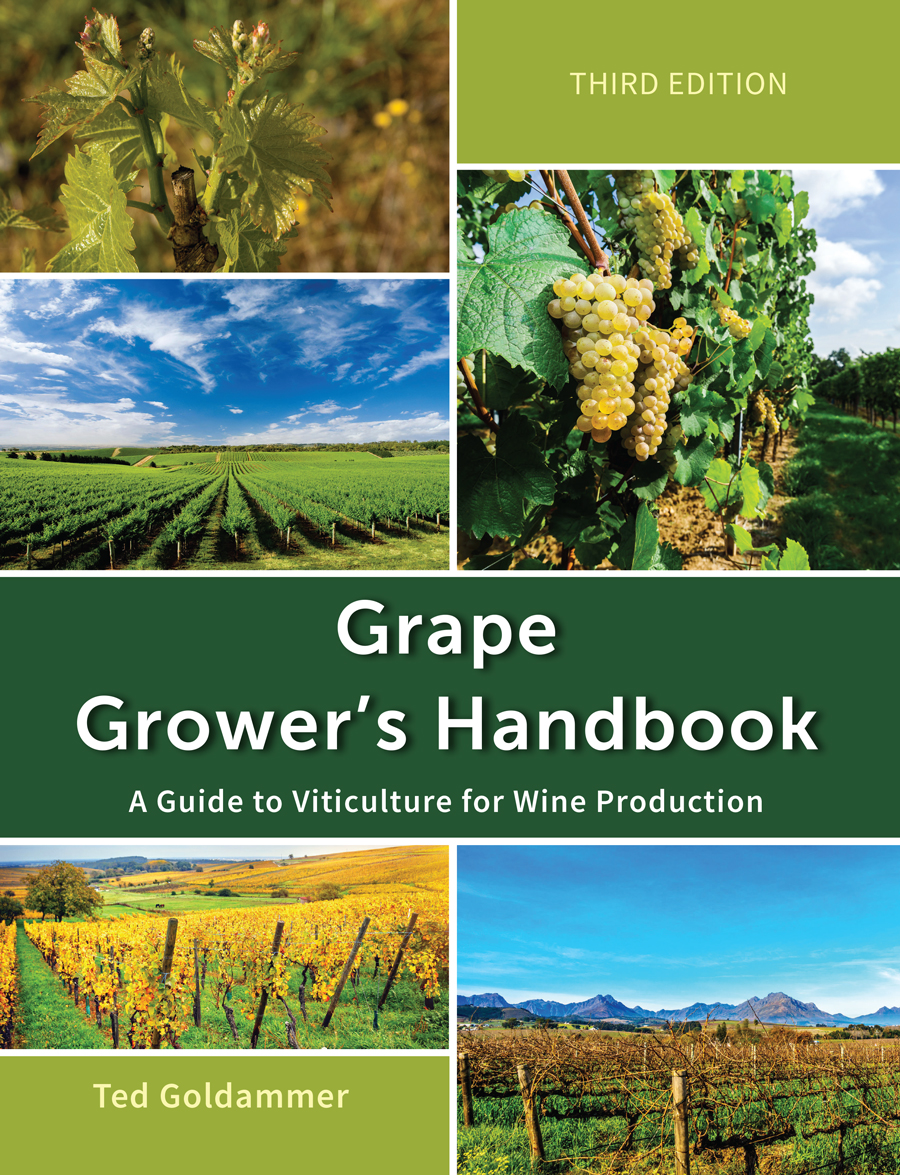Managing Vineyard Diseases
Fungal Pathogens
Phomopsis Cane and Leaf Spot
Phomopsis cane and leaf spot is caused by the fungus Phomopsis viticola, which is widely distributed throughout the world where grapes are grown. The disease is most destructive in regions where cool, wet weather persists after budbreak, especially in successive years.
Symptoms
Vegetative: The most obvious symptom is the vine produces shoots that die back quickly or fail to produce shoots at all. Shoots that are produced are stunted, bear very small misshapen leaves, and have shortened internodes. Lesions on new shoot growth have dark chlorotic spots with dark centers, which develop into black spots or elliptical lesions.
Fruit: If weather conditions are sufficiently wet, Phomopsis can cause fruit rot after berries begin to mature in mid- to late-summer. Initially the tiny green fruits that are infected may appear normal, but, as the fruit starts to ripen near harvest, the fungus becomes active and causes the fruit to rot.
Disease Cycle
Black fruiting bodies of Phomopsis overwinter in infected wood (diseased canes or pruning stubs) and rachises as pycnidia. Bleached areas, sometimes delineated by black lines, on dormant canes are indicative of infection. In spring and early summer, conidia (spores) are released from pycnidia (fungal fruiting bodies) and are spread by rain to developing shoots and leaves.
Cultural Pest Control
The most efficient way to control Phomopsis cane and leaf spot is the use of good cultural practices. Pick a vineyard location with good air drainage and arrange the rows so that air movement after a rain is maximized. The disease is most likely to occur in places in a vineyard, where it has previously been a problem. It is especially a problem on damp and humid sites in sheltered areas where air movement may be low such as adjacent to wind breaks or sheds, or in hollows, and inside dense canopies.
Cultural Pest Control
The most efficient way to control Phomopsis cane and leaf spot is the use of good cultural practices. Pick a vineyard location with good air drainage and arrange the rows so that air movement after a rain is maximized. The disease is most likely to occur in places in a vineyard, where it has previously been a problem. It is especially a problem on damp and humid sites in sheltered areas where air movement may be low such as adjacent to wind breaks or sheds, or in hollows, and inside dense canopies.
Biorational Pest Control
Minerals. Contact protectants such as copper/sulfur materials (alone or in combination with systemic organic fungicides) need to be applied before spring rains.
Chemical Pest Control
At present, Ridomil (mefenoxam + mancozeb) and fungicides with the active ingredients captan or ziram are recommended for control of this disease. They are ranked as moderately to highly effective.
Applying Control Materials. Cane and leaf infections can be prevented by one or two early-season spray applications; the number of sprays depending on the extensiveness of previous year's infections and occurrence of prolonged rainy periods. The bloom through fruit set period, particularly if it is rainy, is the most critical time to protect fruit from infections.
Click on the following topics for more information on managing vineyard diseases.

